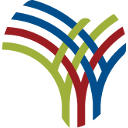Lindiwe Zulu, South Africa’s social development minister, published draft regulations for the R350 social relief of distress grant (SRD) on 14 July 2022. They include new rules on who qualifies.
The grant, introduced in May 2020 at the height of the country’s Covid-19 lockdown, helps unemployed people meet their most basic needs. More than 11 million people have applied for the grant, which has been extended until March 2023.
In a July 2022 panel discussion on youth unemployment, local TV station eNCA claimed that “youth holding tertiary qualifications account for 60% of R350 special grant applicants”. This appeared as a chyron on the screen during the “We The Nation” show.
The claim was seized on by a Twitter user in a widely shared tweet that includes a screenshot from the show. It is captioned: “This is bad bad…. no manga manga business!” Other tweets repeat the claim.
South Africa has high levels of youth unemployment. According to Statistics South Africa, 63.9% of youth aged 15 to 24 are unemployed. And almost 43% of youth aged 25 to 34 are unemployed.
Stats SA also says that a third of graduates aged 15 to 24 are unemployed. But do they make up 60% of SRD grant applicants? We checked.
Youth under 35 made up 61.3% of SRD applicants in 2020
The SRD grants are administered by the South African Social Security Agency (Sassa), which falls under the department of social development.
In July 2021, the department published a report assessing the implementation of the grant. It analysed data on SRD grant applicants from May to November 2020, collected through surveys and in-depth interviews. During this period there were about 9.54 million applications.
Identification numbers were used to determine the age and gender of people who applied.
Sassa found that people younger than 35 made up 61.3% of all applicants.
Out of the 10,241 applicants who took part in the survey, 18.2% reported having a tertiary education. According to the World Bank, a tertiary education is “all formal post-secondary education, including public and private universities, colleges, technical training institutes, and vocational schools”. Almost 50% of applicants reported that they had completed matric, the final year of schooling in South Africa.
But Sassa notes that the online survey had an “urban bias” as most of the respondents were based in and around cities.
Just 5% of SRD applicants have tertiary qualifications – Sassa
The department published updated figures on 14 July, in a press statement about minister Zulu’s proposed amendments to the SRD grant. Under the new regulations, the maximum income for applicants to qualify for the grant will be raised from R350 per month to R624 per month.
The statement said a total of 11.4 million people had applied for the grant.
“Youth under the age of 35 years account for 60% of the applications, while 40% of the applicants have a grade 12 qualification and 5% a tertiary education,” it said.
These figures were confirmed by Sassa’s executive manager for grants, Brenton Van Vrede, in a July interview with PowerFM.
“What’s even more worrying is that of 11 million applicants, about half a million are people with tertiary education,” he said.
This amounts to about 4.35% of applicants – far short of the 60% figure claimed by eNCA.
Van Vrede linked the figures to high levels of youth unemployment. “We know the unemployment rate amongst youth is the highest.”
The data on SRD grant applications was being shared with other government departments, including the presidency, Van Vrede said. This could lead to more initiatives targeted at the youth.
Conclusion: eNCA confuses number of youth applicants with number of graduate applicants
South African media outlet eNCA broadcasted a startling claim that 60% of R350 social relief of distress grant applicants were youth with a tertiary qualification.
But a closer look reveals that 60% of all SRD grant applicants were simply youth under the age of 35. This was confirmed by Sassa’s executive manager for grants. Out of the 11.4 million applicants, roughly 5% had a tertiary education.
ENCA appears to have confused the number of youth applicants with the number of applicants with a tertiary qualification.
Its claim is incorrect.
Source link
